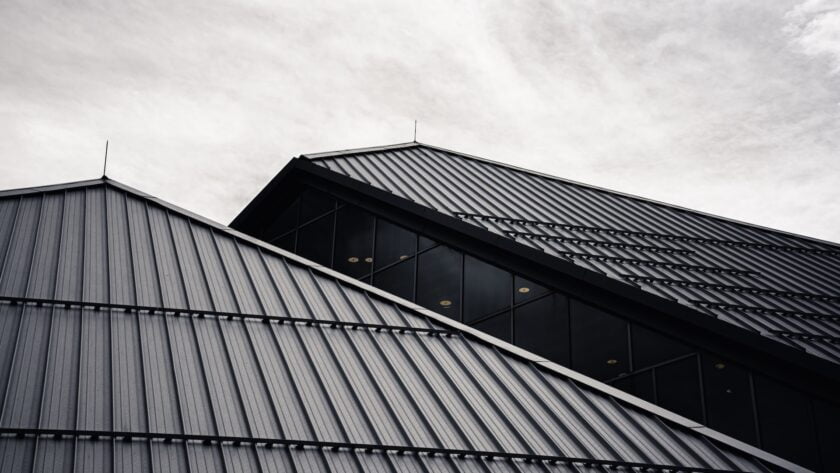The heart’s dwelling is home, and it’s the location where most energy consumption takes place. In the face of mounting worries over climate change and the escalating costs of energy, homeowners are actively exploring methods to render their residences more energy-savvy. One significant step towards achieving eco-gains and reducing heat loss is by investing in a new roof. Let’s explore how a new roof can transform your home’s efficiency and make your dwelling more sustainable.
The Invisible Culprit: Heat Loss
As you sip on a hot cup of tea in your cozy living room, do you ever wonder where all that warmth goes? Well, a significant portion of it might be escaping through your roof. Heat loss is a common phenomenon that occurs when your home lacks proper insulation and energy-efficient roofing materials. This results in higher energy bills and increased carbon footprint, making it a problem worth tackling.
Old roofs can lose heat more easily due to a combination of factors. Over time, wear and tear can lead to deterioration of the roof’s insulation and weatherproofing, causing gaps and cracks that allow heat to escape. Additionally, outdated roofing materials may have lower thermal resistance, leading to poor insulation properties. As a result, heat from the interior of the building can easily transfer through the roof and dissipate into the surrounding environment, leading to increased energy consumption and higher heating costs. Regular maintenance and upgrading to modern, energy-efficient roofing materials can help mitigate heat loss and improve the overall energy performance of the building.
The Environmental Toll of Traditional Roofing
Before we delve into the eco-gains of a new roof from reputable companies like Noah’s Roofing, it’s essential to understand the environmental toll of traditional roofing materials. Many conventional roofing options, such as asphalt shingles, contribute to the ever-growing landfill problem. Additionally, their manufacturing processes often involve high energy consumption and emissions, further impacting the environment negatively.
Embracing Eco-Friendly Roofing Solutions
As sustainability becomes the new norm, roofing technology has evolved to offer more eco-friendly alternatives. Options like metal roofs, clay tiles, or even green roofs with living vegetation are gaining popularity due to their durability, recyclability, and energy-saving features. Not only do these choices reduce heat loss, but they also enhance your home’s aesthetic appeal and value.
The Power of Reflective Roofing
Reflective roofing materials, often known as cool roofs, are designed to bounce sunlight back into the atmosphere instead of absorbing it. This simple yet effective concept helps maintain cooler indoor temperatures during scorching summers, reducing the need for excessive air conditioning. By mitigating the urban heat island effect, reflective roofing also contributes to a healthier local environment.
Sealing the Energy Leaks: Proper Insulation
A new roof should be complemented by adequate insulation to prevent energy leaks. Good insulation acts as a thermal barrier, ensuring that your home retains heat during winters and stays cool during summers. This not only improves energy efficiency but also enhances indoor comfort, allowing you to enjoy the perfect climate without wasteful energy consumption.
Going Solar: The Energy-Generating Roof
Imagine if your roof not only protected your home but also generated clean and renewable energy. With the progress in solar technologies, this aspiration is now achievable. By incorporating solar panels into your roofing structure, you can exploit the sun’s rays to produce electrical energy for your family. This step not only advances you towards energy autonomy but markedly cuts down your carbon emissions as well.
The Financial Incentives
Initially, the act of investing in an innovative, energy-saving roof might appear as a hefty financial burden. Yet, it’s vital to recognize the enduring financial perks that accompany this investment. Diminished energy expenses, possible tax deductions, and rewards from local governance make the conversion to environmentally responsible roofing a wise financial move. In addition, an efficient roof can heighten your house’s resale value, posing an appealing feature to prospective purchasers.
A Greener Future for All
As domestic proprietors grow increasingly aware of their ecological footprints, the desire for energy-savvy and sustainable roofing solutions is expected to swell. By adopting these environmental advantages, we not only curtail our carbon effects but also lay down a path for a more ecologically sound future for the subsequent generations.
Conclusion
From minimizing thermal escape and adopting green roofing alternatives to producing uncontaminated energy and enjoying financial benefits, a novel roof has the capability to metamorphose your home’s efficacy and render it more sustainable. It’s the moment to say goodbye to energy-draining roofs and usher in the epoch of environmental profits. Therefore, if the aim is to foster a more soothing, eco-friendly, and economically wise dwelling space, putting funds into a new roof might be the ideal path forward. Let’s collaborate in constructing a more environmentally friendly future, one roof at a juncture.




